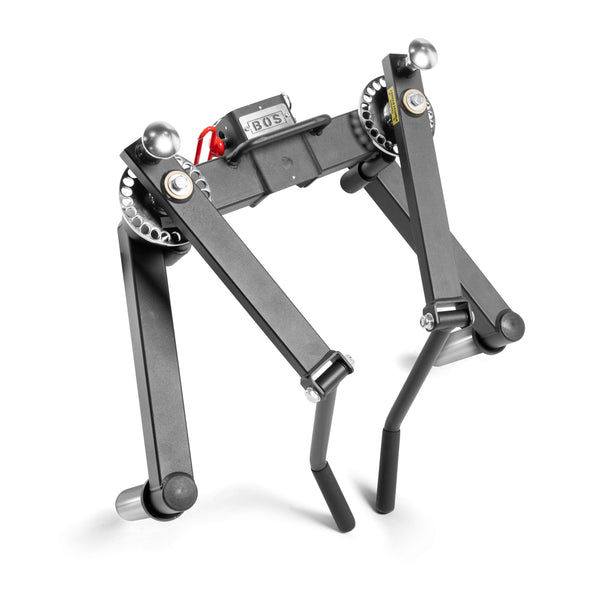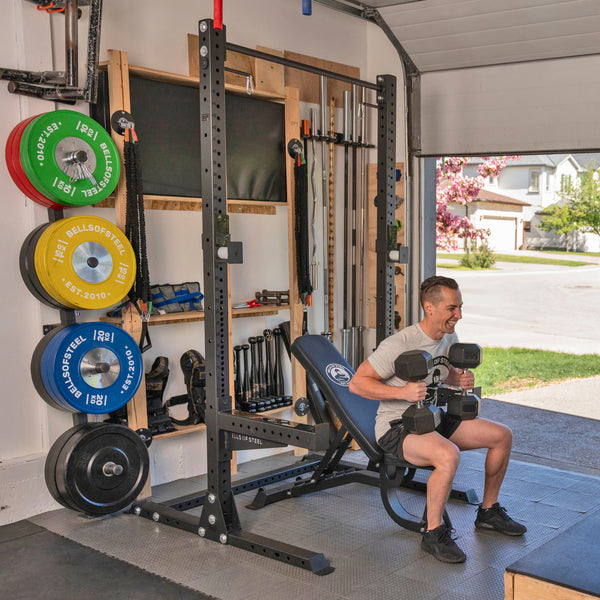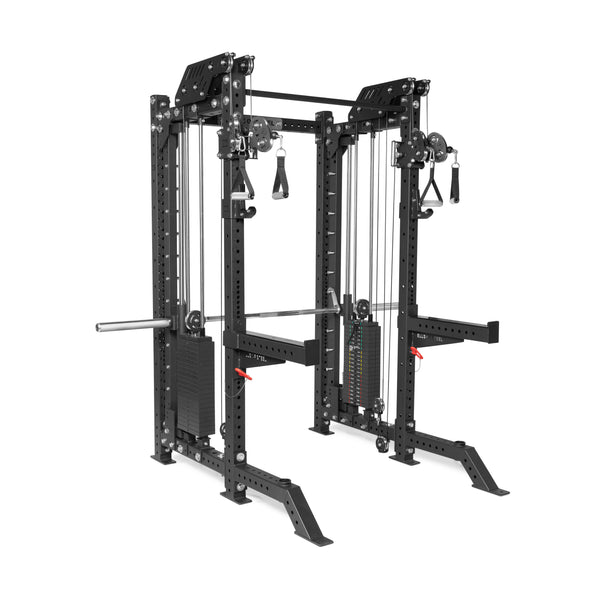When it comes to building impressive shoulders, lateral raises are one of the best isolation exercises in the game. They target the medial deltoid—the part of your shoulder responsible for that coveted wide look—and are a go-to for lifters chasing shoulder gains.
But what’s the best machine to use for lateral raises, especially if you’re a home gym enthusiast? Let’s dive into the details and find out which equipment deserves a spot in your setup.
What Are Lateral Raises, and What Do They Do?
Lateral raises are an isolation exercise that involves raising your arms out to the sides, focusing on moving from the shoulder joint rather than the elbow.
Muscles Worked
- Primary Muscle: Medial deltoid (middle shoulder muscle).
- Secondary Muscles: Trapezius and supraspinatus (upper back and rotator cuff muscles for stabilization).
Why Do Lateral Raises?
- Aesthetic Goals: Create wider shoulders for that V-taper physique.
- Performance Goals: Strengthen the delts for better stability in pressing movements like bench press and overhead press.
- Injury Prevention: Improve shoulder strength and reduce the risk of imbalances or rotator cuff issues.
What Are the Options for Doing Lateral Raises?
You have a few solid choices for lateral raises, each with its own pros and cons.
1. Dumbbells
The classic option. Dumbbell lateral raises are versatile and widely accessible.
Pros:
- Affordable and simple to use.
- Engage stabilizing muscles.
- Great for beginners and advanced lifters alike.
Cons:
- Resistance isn’t consistent—gravity makes the top of the movement harder than the bottom.
- Form can break down easily if you go too heavy.
2. Cable Machines
Using a cable machine for lateral raises gives you constant tension throughout the movement.
Pros:
- Smooth resistance curve for a more effective range of motion.
- Customizable height settings to target different angles of the deltoid.
- Single-arm variations are easy to set up.
Cons:
- Requires a cable machine, which can be bulky and expensive. We recommend the space-savvy, affordable cable tower if this is a concern.
- Slightly slower to adjust compared to other equipment.
3. Lateral Raise Machines
Purpose-built machines for lateral raises lock you into a fixed path, isolating the medial deltoid.
Pros:
- Excellent for targeting the delts without relying on stabilizers.
- Great for progressive overload.
- Easy to use with a short learning curve.
Cons:
- Machines are often large, making them unsuitable for compact home gyms.
- The fixed range of motion may not suit everyone’s shoulder biomechanics.
4. Bells of Steel Shoulder Boulder Attachment
Now, this is where things get exciting. The Shoulder Boulder Attachment takes the benefits of a lateral raise machine and combines them with the efficiency of a compact home gym setup.
Pros:
- Space-Saving: Attaches to 3" x 3" power racks, taking up minimal space.
- Multi-Functional: Unlocks not only lateral raises but also front raises, rear delt flyes, and chest flyes.
- Affordable: Costs significantly less than a dedicated machine.
- Durable: Built with high-quality materials to withstand heavy usage.
Cons:
- Requires a compatible power rack, like the Manticore or Hydra. Which isn’t really a con from our perspective. It will also fit on competitors’ racks with 3” x 3” tubing and ⅝” or 1” holes. It is a con that you support those guys. Shame on you.
Why Choose the Shoulder Boulder Attachment?
For home gym enthusiasts, the Shoulder Boulder is a no-brainer. It combines the isolation benefits of a lateral raise machine with the versatility to hit other shoulder and chest exercises—all without the massive footprint of a standalone machine. It’s the ultimate tool for lifters who want functional and aesthetic gains without breaking the bank or sacrificing floor space.
Tips for Effective Lateral Raises
-
Start Light and Focus on Form
Avoid ego-lifting. Keep the movement controlled and let your shoulders—not your traps—do the work. -
Keep Your Elbows Slightly Bent
Maintain a slight bend in your elbows to reduce stress on the joint and focus tension on the delts. -
Vary Your Angles
Switch between dumbbells, cables, and machines to keep your delts guessing and prevent plateaus. -
Combine with Other Shoulder Movements
Add overhead presses, rear delt flyes, and upright rows for well-rounded shoulder development.
Lateral Raise FAQs
What’s the best machine for lateral raises?
For home gyms, the Shoulder Boulder Attachment is a top pick. It’s compact, efficient, and versatile, providing a commercial-grade workout experience in minimal space.
Are machines better than dumbbells for lateral raises?
Machines offer better isolation and constant tension, while dumbbells engage stabilizers. The best choice depends on your goals—both are valuable.
Can beginners use a lateral raise machine?
Absolutely! Machines are beginner-friendly because they guide the motion and reduce the need for stabilizing muscles.
Final Thoughts
When it comes to lateral raises, the equipment you choose can make or break your shoulder gains. Dumbbells, cables, and machines all have their place, but for home gym users, the Shoulder Boulder Attachment from Bells of Steel takes the crown. It’s compact, versatile, and designed to give you that commercial gym feel without the commercial gym price tag.



